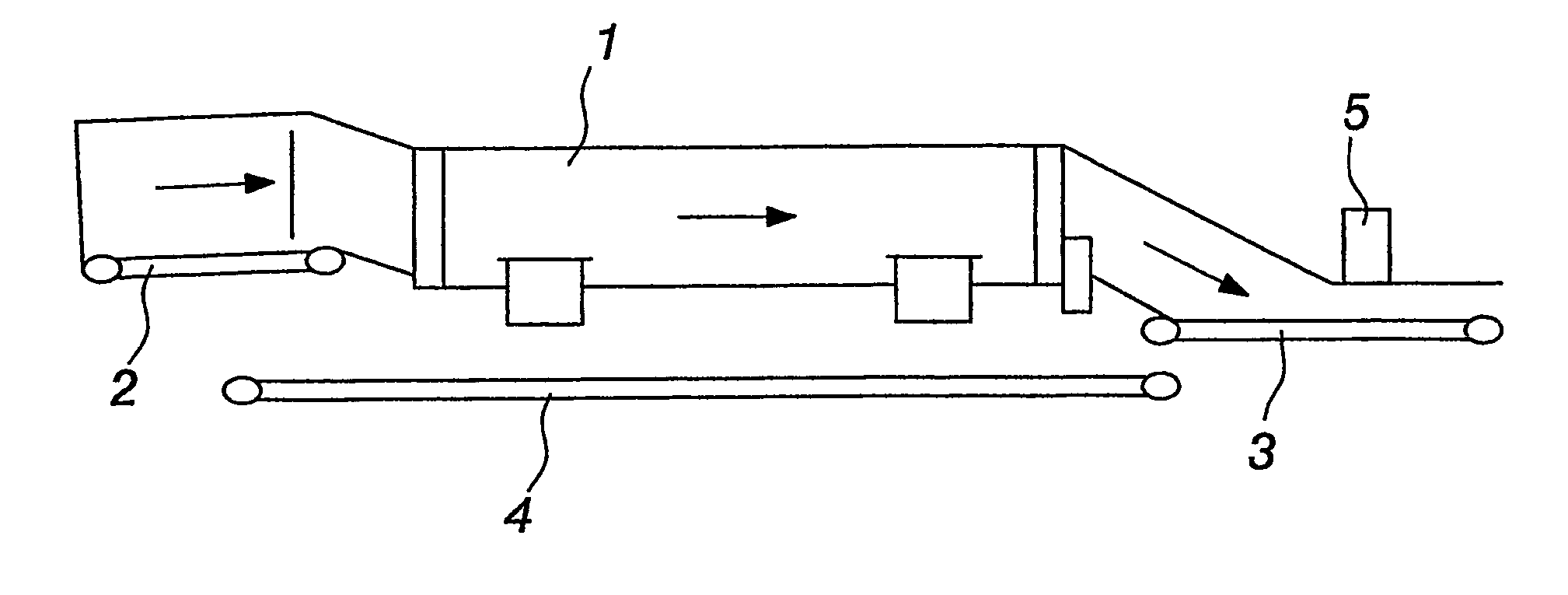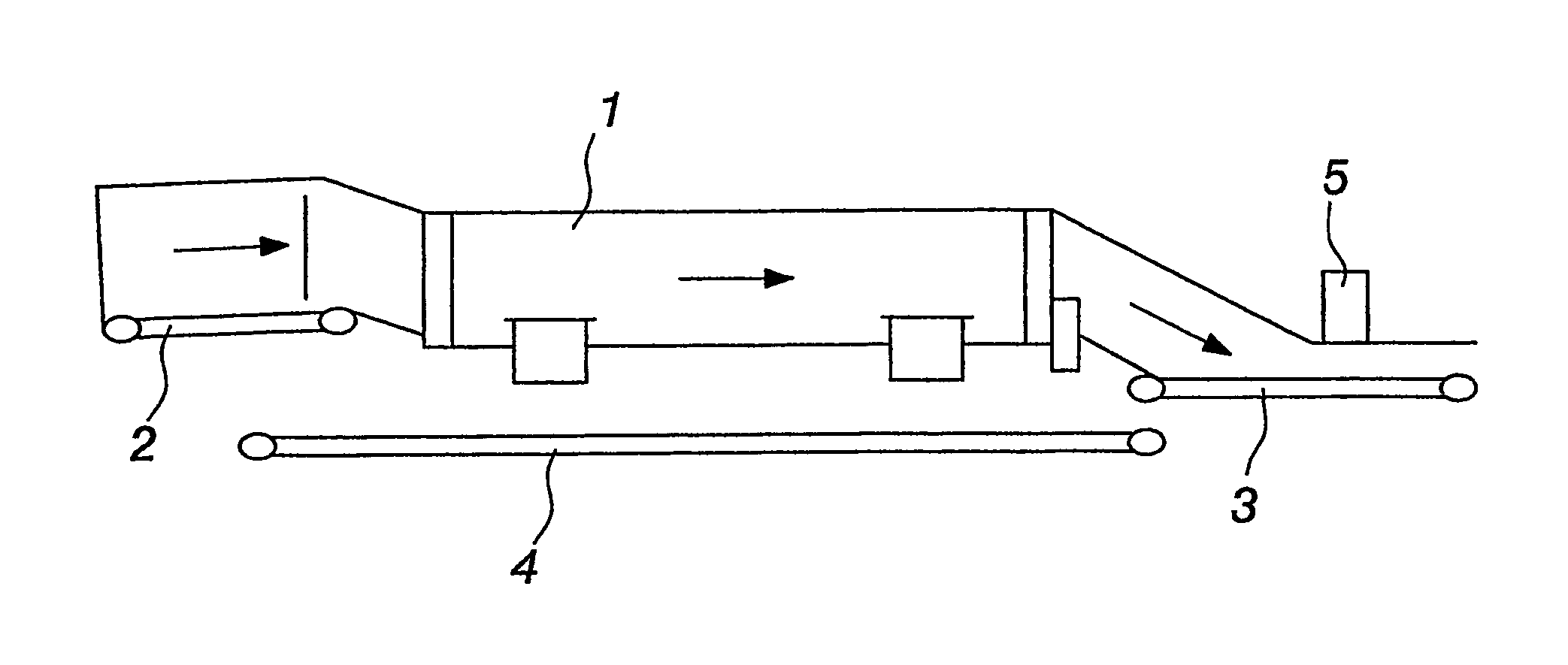Method for optimizing the debarking result of logs debarked in a debarking drum
a debarking drum and log technology, applied in the direction of tree debarking, chemical debarking, multi-purpose machines, etc., can solve the problems of low level of automation at the debarking plant, problems affecting the quality of products, and the capacity and deposition of logs
- Summary
- Abstract
- Description
- Claims
- Application Information
AI Technical Summary
Benefits of technology
Problems solved by technology
Method used
Image
Examples
Embodiment Construction
[0019] In the drawing, reference numeral 1 denotes the debarking drum, from one end of which the logs to be debarked are fed in by means of a feed conveyor 2 and from the other end of which come out the debarked logs on a discharge conveyor 3.
[0020] The rotation of the drum 1 causes the logs to rub against one another, whereby the bark detaches from their surface and is discharged from the drum 1 through the bark apertures (not shown) on its shell, onto a belt conveyor 4 below the drum 1. At the same time, however, depending on the process controls, more or less of the actual wood material detaches from the logs, the wood material accounting for the wood loss when it discharges with the bark through the bark apertures.
[0021] The measuring unit arranged above the discharge conveyor 3 is marked by reference numeral 5. It is used in the method according to the invention, where it measures the amount of bark remaining on the logs in the log flow discharged from the debarking drum 1, a...
PUM
 Login to View More
Login to View More Abstract
Description
Claims
Application Information
 Login to View More
Login to View More - R&D
- Intellectual Property
- Life Sciences
- Materials
- Tech Scout
- Unparalleled Data Quality
- Higher Quality Content
- 60% Fewer Hallucinations
Browse by: Latest US Patents, China's latest patents, Technical Efficacy Thesaurus, Application Domain, Technology Topic, Popular Technical Reports.
© 2025 PatSnap. All rights reserved.Legal|Privacy policy|Modern Slavery Act Transparency Statement|Sitemap|About US| Contact US: help@patsnap.com


